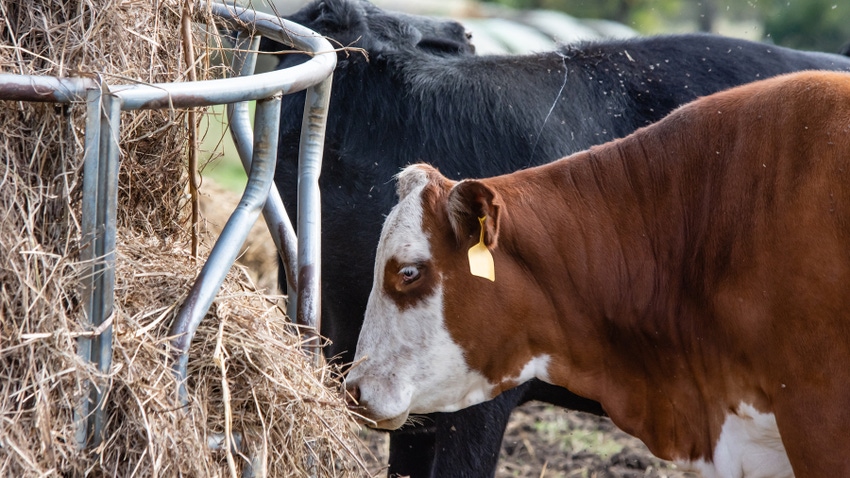
Dry conditions and drought are something many producers are experiencing across the region. With the smallest U.S. cow herd in 60 years, how will drought affect the future value of productive females?
Jason Warner, a cow-calf specialist at Kansas State University Extension, says producers should remember six key points for developing a forage plan in times of drought:
Know your herd inventory.
Know your feed inventory.
Calculate harvested forage needs.
Consider alternatives.
Minimize feed and forage shrink.
Be flexible and look for new opportunities.
“In a drought situation, we may have to be looking at how we can supplement that forage,” Warner explains. “Protein content is our first limiting factor when we’re working with less than 7% crude protein in that pasture.”
In addition to knowing forage inventories, he says that producers should begin sampling harvested forages for feed needs. “Be aware of the possible presence of molds or other anti-nutritional compounds in hay harvested at higher-than-typical moisture levels,” he says.
Cost of supplements
Pricing out supplements based on the units of energy gained may help offset rising prices.
“When we think about maybe supplementing protein and energy together, you have to make sure it fits your situation,” he says. “Regardless of whether it’s a protein or energy source you’re purchasing, I always encourage folks to think about it on a cost per unit of nutrient basis.”
With prices varying greatly based on location and operation structure, Warner says he always recommends comparing prices to get the most bang for your buck.
“When you’re thinking about a dry distillers grain source or corn gluten feed or silage hay, it needs to be priced out appropriately,” he says. “There’s the idea that there’s a big cost difference in what you’re purchasing that supplemental nutrient for, and you always want to be thinking of that difference as you make decisions moving forward.”
Rolled corn, alfalfa hay, sorghum hay, dried distillers grain, corn gluten feed and soybean hull pellets are all options for energy and protein supplementation.
“If you’ve got an alfalfa hay source that is 58% TDN, and are supplementing DDGs or corn, you might be able to save about 14 cents per cow per day with a higher-quality alfalfa, and that can add up very quickly,” he says. “Good-quality forage sampling is always important. But during times of drought, it becomes even more paramount to costs saving.”
To determine if you have adequate hay and forage on hand for your herd, turn to the Kansas State University forage inventory calculator for help in making supplement decisions this fall.
About the Author(s)
You May Also Like






